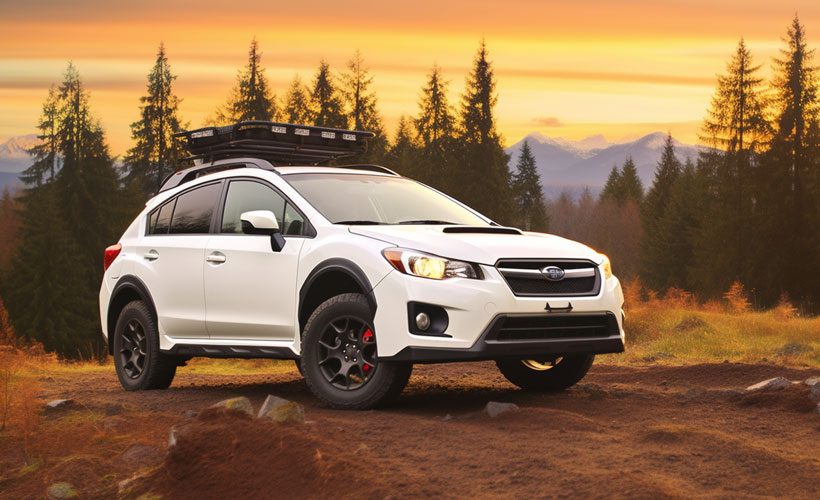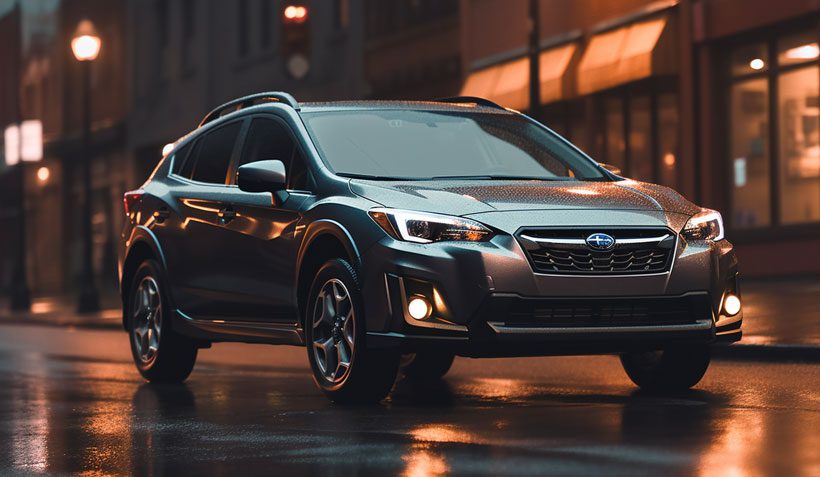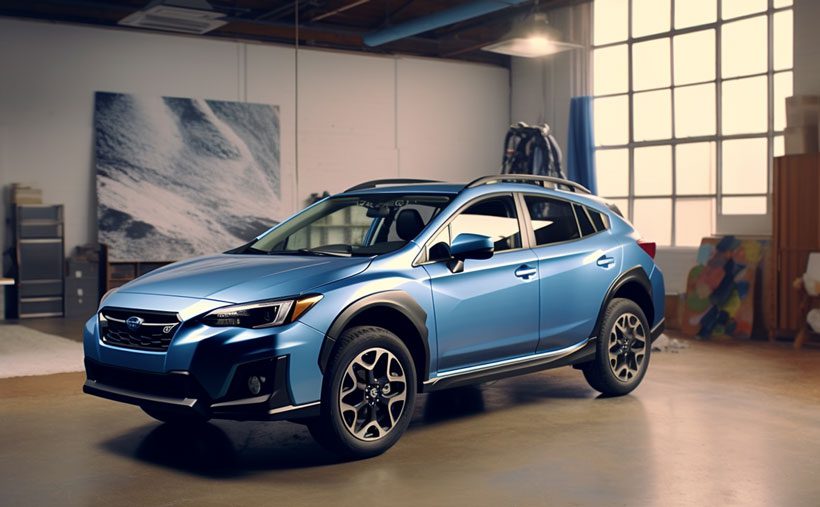Starting problems are a major concern, especially for vehicles using a smart key to start such as the Subaru Crosstrek. You may have experienced your Subaru Crosstrek not starting when you ignite. But ever wondered what causes this issue?
Why your Subaru Crosstrek won’t start? The main reasons behind the problem are a weak or dead car battery, a defective alternator and a broken starter. It may also be due to poor electrical connections, a faulty fuel system, or a blown fuse. Poor ground or battery connection can also cause your vehicle not to start.
In this guide, we shall discuss the main problems causing your Subaru Crosstrek not to start and the possible solution to these problems.
Subaru Crosstrek Won’t Start – Quick Overview!

Check the table below to have a quick overview of the causes for your Subaru Crosstrek not starting and the possible solutions.
| Reason Subaru Crosstrek won’t start | Possible Solution |
|---|---|
| Dead car battery or poor battery connection | Recharge or replace the battery |
| Ensure proper connection on the battery terminals | |
| Scrub corroded battery terminals | |
| A defective alternator | Replace it with a new alternator |
| Faulty starter or dead key fob battery | Replace the starter head |
| Replace the key fob battery | |
| Blown fuse | Replace the blown fuse |
| Check the wire connection for any faulty connections | |
| Empty fuel tank or clogged fuel filters | Top up the gas tank |
| Clean clogged filters and replace them if needed | |
| Faulty electrical connections between the battery and the starter | Inspect the wire connections and repair broken or loose connections |
| Poor ground wire connection | Reinforce the connection with a conductor onto the chassis |
Subaru Crosstrek Won’t Start – (Common Causes And Possible Solutions!)

Below are the causes of your Subaru Crosstrek not starting and solutions you can DIY at the garage. For complex issues, consult a qualified mechanic.
1. Dead Or Weak Battery
Battery-related problems are the significant causes of your vehicle not starting. The car battery provides start-up power to the electrical components that cause the engine to start.
If your battery dies, the ignition switch doesn’t get enough power to start the engine.
What to do?
Before replacing or recharging the battery, check the battery voltage to determine whether it is a causative problem or not using the process below.
- Switch off the car and open the hood to access the car battery
- Unscrew the cover casing on the battery to expose the battery
- Remove the plastic/rubber casings on the battery terminals
- Disconnect the wire connections on the terminals
- Connect the terminals of the voltmeter to both battery terminals
- Check the readings on the voltmeter
If the voltmeter reads between 12.4 volts and 12.7 volts, the battery is in good condition, and you should proceed with further diagnosis.
If the voltage reads below 12.4V, recharge it with a trickle-slow process. For voltage above 12.9, turn on the high beams to remove the excess charge. You can also discharge the battery by connecting a 20 ohm, 10W resistor across the battery terminals.
Keep checking the voltage level and stop the discharge once it hits the 12v standard mark.
For a dead battery, replace the battery with a new battery and use the recommended type and size following the process above.
2. Poor Connections And Corroded Terminals
If you confirm that the battery is in good condition, move on to check the connections and whether the battery terminals are corroded. Also, check the calipers which get worn out due to acidic corrosion leading to loose connections.
The battery may suffer from loose connections at the terminals, mainly when corrosion occurs. Corroded terminals reduce current flow affecting the starter powering unit.

What to do?
- Clean the battery terminals to remove any corrosion using a soft brush and tighten any loose connections.
- Use clean hot water to melt the corrosion and ensure the terminals are not immersed in water for possible short-circuiting.
Your Subaru Crosstrek should now start without any battery problems.
3. A Defective Alternator
An alternator recharges the car battery by converting mechanical energy into electrical energy. A faulty alternator affects the charging system, and the battery dies even if it’s new.
What to do?
Replace the faulty alternator with a new alternator and ensure it has similar features as recommended by the manufacturer.
To replace the alternator, follow the following steps.
- Step 1: Turn off the car and disconnect the battery terminals
- Step 2: Locate the cable connections at the back of the alternator and disconnect them carefully
- Step 3: Remove the belt attached to the pulley on the front end of the alternator
- Step 4: Locate and unscrew the bolts and screws holding the alternator
- Step 5: Get the new alternator and replace it and hold it in position using bolts
4. Poor ground wire connection
The ground wire connection completes the electrical and the ignition system by providing an earthing for efficient current flow. When the connection is faulty, the current doesn’t flow as intended and the end result is your vehicle not starting when ignited.
The ground connection is caused by too much insulation of the engine and its components from the chassis to absorb vibrations. The insulation cuts the flow of the ground connection to the chassis.

What to do?
Introduce a cable connection from the engine and the starter motor to the chassis to complete the earthing connection. The ground connection allows the flow of electrons in the ignition system for efficient starting of the engine.
5. Faulty Electrical Connections
For the starter to operate, it must be supplied with power from the battery. If the connections are loose or damaged by rodents, your vehicle will not start. You, therefore, need to check the wiring connection from the battery to the starter head.
What to do?
Repair the broken or damaged parts along the connections. Also, replace any cables and accessories that are destroyed beyond repair.
Insulate the delicate cables and accessories, such as the fuses and joints. Tighten any loose connection or joint that may be losing power.
6. Faulty Starter Or Weak Key Fob Battery
If you check the electrical system and confirm it is in good condition, but your car won’t start, consider inspecting the starter head and the key fob for possible problems.
Check if the starter key is broken or damaged so it fails to complete the electrical circuit. Also, check the key fob battery with a voltmeter.

What to do?
Replace the key fob battery and test if the vehicle will ignite and keep the key fob within range for efficient functionality.
Also, replace the damaged starter with a new OEM part that fits the starter groove following the process below.
- Press the ignition button to switch off the vehicle and disconnect the negative and the positive cables from the battery terminals
- Using a screwdriver, unscrew the bolts and clippers holding the starter in position
- Disconnect the cables attached to the starter from the dashboard carefully to avoid damage to the cables
- Remove the starter from the vehicle by pushing it into the dashboard
- Get a new starter and fix it in the groove. Hold it in place using bolts and clippers and ensure its tightly held
- Replace the cable connections into the new starter following the order as indicated in the manual
The replacement cost will vary between $70 and $100.
7. Blown Fuse
A fuse may be damaged in cases of excess current in the electrical system, especially if the alternator is faulty. Open the fuse box and inspect the fuses with a testing screw to check for current flow.
Blown fuses are often discolored with a burnt effect due to the excess current. At the same time, the current doesn’t flow through the blown fuses.
What to do?
Locate and replace the blown fuses. You can also inspect the electrical connection problem that caused the fuse to blow.
8. Faulty Fuel Pump Or Clogged Fuel Filters
A faulty fuel pump reduces the amount of fuel reaching the engine for combustion. In high-demand situations such as heavy loads, the engine fails to start as it requires more energy.
Fuel filters may be clogged by contaminants in the fuel or particles sucked in through leakages. Such contaminants clog the fuel filter and reduce fuel feeding into the engine.

What to do?
Replace the fuel pump with an equivalent OEM spare pump and ensure no leakages along the fuel system. Also, replace the clogged fuel filter for efficient fuel supply to the engine.
To replace the fuel pump;
- Start by disconnecting the pump hoses and brake lines connected to the pump
- Unscrew the bolts and nuts holding the pump in place and carefully remove it without damaging attached accessories
If the fuel pump is in good condition but won’t start, check the fuel filter for any clogged parts.
Open the fuel filter portion by unscrewing the bolts and replacing the fuel filter with a new one. For a completely damaged fuel pump and filter,
- Replace it with the new fuel pump
- Use the screws to hold the new pump in position and ensure that the pump is correctly placed
- Connect the hoses and other accessories attached to the fuel pump
FAQs
Read the frequently asked questions below by other Subaru Crosstrek users whose vehicles won’t start.
Your engine may crank but not start due to low voltage in the battery or a loose connection that supplies little power to the starter but not enough to start the engine.
Check the battery and related connections for a smooth start to your Subaru Crosstrek. Also, inspect for corrosion and worn-out terminal clippers.
Replace your car battery after 4-5 years. The battery lifespan may be extended for up to 7 years with proper care and maintenance, depending on the usage frequency.
A dead Subaru Crosstrek battery has dim front and backlights that may not switch into full blast. Another indicator is flickering dashboard lights that can be observed when you start the vehicle.
In extreme conditions, the vehicle doesn’t start or cranks slowly and goes off.
Conclusion
There are many reasons why your Subaru Crosstrek won’t start, but most of the starting problems are caused by power supply problems or connections in the electrical system. However, Subaru Crosstrek starting problems can easily be rectified if detected early enough.
Ensure proper maintenance and servicing of your car to avoid starting problems. You can safely repair or replace the damaged parts in your garage. However, seek mechanical assistance for complex issues such as engine repairs.
